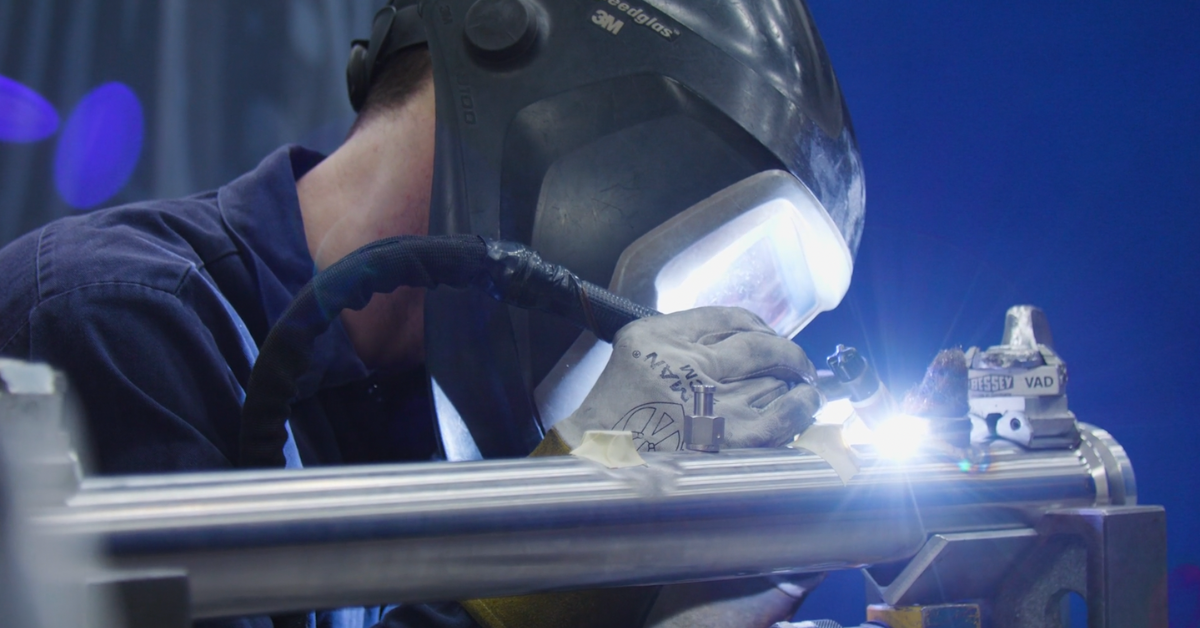
Specialty Equipment
The Single Source for All Your Equipment Needs
Gray’s Specialty Equipment segment offers a wide range of expert services to design, manufacture, integrate, install, and maintain some of the most advanced systems on the market. We provide purpose-built solutions and focused services to meet customers’ equipment needs and can integrate seamlessly into larger facility design-build, expansion, and retrofit projects with our engineering and onsite technical support.
Whether custom-designed or built from owner-provided specs, we implement equipment solutions for customers in sanitary processing, pharmaceuticals & bioprocessing, industrial manufacturing, vacuum science, and more. We offer a large fabrication shop with comprehensive manufacturing capabilities, powered by a team of more than 200 equipment professionals, including machinists, welders, finishers, assemblers, and a dedicated support staff. With the aid of our in-house expertise, customers can reduce the risks associated with using multiple equipment vendors and common, one-size-fits-all systems.
While many customers rely on Gray for single-source, end-to-end solutions, we can engage customers at virtually any phase in their project, from conceptual design of process equipment to facility-wide solutions for expanding and improving operations. Our ability to fabricate custom process tools and deliver creative solutions provides greater scheduling confidence and faster speed to market for our customers.
What We Offer
Gray’s equipment offering spans the full spectrum of customer needs, ranging from custom equipment design-build and OEM contract manufacturing to metal finishing and distribution of common products. Our capabilities include:
Custom Equipment Design-Build
- Equipment design-build
- Layout design
- Factory acceptance testing (FAT)
- Commissioning & system integration
- Startup support & servicing
OEM Contract Manufacturing
- Equipment fabrication
- Systems engineering
- Factory acceptance testing (FAT)
- Technical support
Stainless-Steel & Specialty Alloy Fabrication
- CNC & multi-axis machining
- Cutting & forming
- Welding
- Metal finishing
- Complex assemblies
Stainless-Steel & Specialty Alloy Fabrication
Modular Process Skids
- Front-end design & engineering
- Dry material & liquid process systems
- Clean-in-place (CIP) systems
- Confectionery process systems
- Material handling systems / Conveyors & unloaders
- Industrial platforms
Processing Equipment
- Mixers & blenders
- Ovens & cookers
- Storage vessels
- Batching equipment
- Extruders
- Bioreactors
- Pump feeders
- Washdown-ready equipment
- Dust collection & explosion protection
Distributed Products
| Distributed Equipment | Distributed Components |
|
|
Gray’s specialty equipment companies provide the expertise and in-house capabilities to meet your custom equipment needs—whether starting new operations or upgrading existing ones. Anderson Dahlen (ADI) delivers end-to-end equipment design-build and contract manufacturing, with precision fabrication—cutting, forming, machining, welding, finishing, and complex assemblies—backed by engineering, integration, and complete process solutions including skids and sanitary platforms tailored to customer applications.
Our Featured Projects

Kraft Heinz, WI
Award-Winning Innovation for Iconic Kitchen Staple.
Prestage Farms
Turnkey Project Services Enable Greater Production Capacity and Efficiency.
T. Marzetti
Diverse Service Offerings Improve Food & Beverage Facility.
Hill's Pet Nutrition
Integrated Services for Highly Automated Pet Food Facility.
Meet the Team
Gray has a deep bench of leaders with the experience to advise on your most complex challenges.
Markets
-
Manufacturing
U.S. manufacturing is resurgent. Driven by exciting new technologies and processes, record-setting investment and incentives, and reshoring trends across the sector, manufacturing is once again an industry of promise, creating new jobs and fueling innovation.
-
Food and Beverage
Gray’s fully integrated services have you covered at every phase of your food & beverage project. From facility design and construction to process engineering and equipment manufacturing, we offer our customers proven solutions that deliver world-class results for years to come.
-
Data Centers
The cloud computing industry faces a demand crisis. Compared to a year ago, corporate accounts across the board need more storage capacity, greater service speed, continuous uptime, and the assurance that providers have answers to their challenges.
-
Advanced Technology
The integration of advanced technology in professional and private life has hit critical mass. From macroeconomics to micro-entertainment, the future hinges on our ability to leverage technology in ways that empower people to live more efficiently, more sustainably, and more securely.
-
Distribution
The modern distribution facility is a substantially more sophisticated operation than that of a generation ago. From automated storage and material handling to digital inventory and order management, today’s industry is dependent on a steady stream of data and uncompromising efficiency.
-
Commercial
The retail world is always in motion. Changing consumer trends, tech innovation, and corporate expansion strategies all play important roles in identifying areas of need and prioritizing commercial projects. The firm you choose must safely and quickly create a highly engaging, versatile space for the public.
Related Insights & Stories
Call us at 859.281.5000 or send us a message using this contact form.




